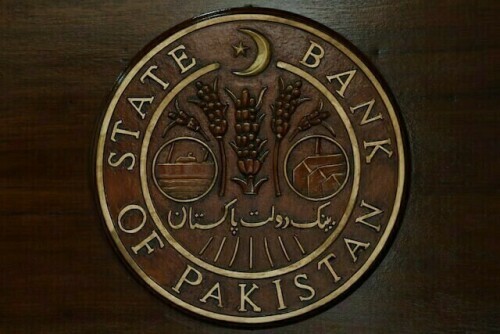State Bank of Pakistan Reduces Policy Rate
The Monetary Policy Committee (MPC) of the State Bank of Pakistan (SBP) has elected to lower the policy rate by 100 basis points (bps), bringing it down to 11%.
In a statement released on Monday, the MPC announced, “During its meeting today, the Monetary Policy Committee (MPC) resolved to decrease the policy rate by 100 bps to 11%, effective May 6, 2025.”
Market Projections
Ahead of the announcement, opinions among market experts were divided regarding the central bank’s anticipated action.
Arif Habib Limited (AHL), a brokerage firm, had projected that the State Bank of Pakistan (SBP) would likely reduce the key policy rate by 50 basis points (bps), setting it at 11.5%.
AHL’s report suggested that the ongoing trend of disinflation and the considerable real interest rate buffer provided scope for a calculated rate cut. This would bolster economic recovery without destabilizing macroeconomic stability.
Conversely, analysts from Topline Securities anticipated that the central bank’s MPC would opt to maintain the status quo. They pointed to several considerations, notably the International Monetary Fund (IMF) review and potential US tariffs.
The report highlighted that “The anticipated foreign inflows for the second half of fiscal year 2025 have not yet materialized and are expected upon the IMF Board’s approval of the first review (before June 2025).”
The IMF also stated in its press release regarding the staff-level agreement that Pakistan remains dedicated to keeping a tight monetary policy in place to maintain low inflation.
“With US tariff risks still present, we believe the central bank will hold steady until there is clarity on this global development.”
Similarly, a poll indicated that the SBP was expected to keep its primary interest rate at 12%, influenced by geopolitical uncertainties and the inflation outlook.
S&P Global Market Intelligence senior economist Ahmad Mobeen suggested that the bank would likely adopt a cautious stance due to an uncertain trade environment, persistent core inflation, and an impending International Monetary Fund review.
Previous MPC Conclusion
During its previous assembly, the central bank’s MPC chose to keep the policy rate unchanged at 12%, which deviated from market forecasts.
At that time, the committee observed sustained momentum in economic activity, evidenced by recent high-frequency economic indicators.
Furthermore, the MPC noted the appearance of some pressures on the external account due to increased imports alongside weakened financial inflows.
The MPC determined that the prevailing real interest rate was sufficiently positive on a forward-looking basis to sustain macroeconomic stability.
Several significant economic developments have unfolded since the last MPC meeting.
The rupee’s value has decreased by 0.4%, while petrol prices have fallen by 1.2%.
Globally, crude oil prices have experienced a decline since the last MPC meeting, settling around $61 per barrel due to improved supply conditions.
Data from the Pakistan Bureau of Statistics (PBS) revealed that Pakistan’s headline inflation was recorded at 0.3% year-on-year in April 2025, lower than the 0.7% recorded in March 2025.
Moreover, Pakistan’s current account (C/A) showed a notable surplus of $1.2 billion in March 2025, a considerable improvement from the $97 million deficit in the previous month. On a year-on-year basis, the C/A increased by 230% compared to the $363 million surplus in the same month last year.
The foreign exchange reserves held by the SBP saw a slight increase of $9 million on a weekly basis, reaching $10.21 billion as of April 25.
The country’s total liquid foreign reserves amounted to $15.25 billion, with net foreign reserves held by commercial banks at $5.04 billion.



Comments (0)
No comments yet. Be the first to comment!
Leave a Comment